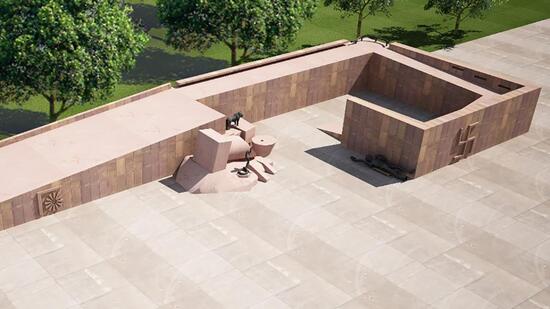Martyrs Memorial in Chandigarh likely to be ready by June
Originally conceptualised by Swiss-French architect Le Corbusier, the project at Chandigarh Capitol Complex also features in Chandigarh Master Plan-2031
Pending since the 1970s, construction of the Martyrs Memorial at the Chandigarh Capitol Complex is expected to be completed by June this year.

The project, encapsulated in Chandigarh Master Plan-2031, was originally conceptualised by Swiss-French architect Le Corbusier.
Work on the memorial, divided into two parts, was first taken up by sculptor Sanko Chaudhuri in 1973, but only the first part was completed.
To complete the second and main component, the UT engineering department floated a tender on February 1 inviting firms to complete the monument, particularly, the stone art work. It has set a four-month deadline to complete the project.
“The administration had committed completion of the Martyrs Memorial in the dossier while seeking a UNSECO heritage tag for the Capitol Complex. While the complex got the tag in 2016, the memorial is still hanging in balance. Now the administration has finally decided to go ahead with the project and deliver on its commitment to the UNESCO and Le Corbusier’s vision,” said a senior UT official.
UT has already finished a Geometric Hill, which was also promised under the dossier. UNESCO monitors the preservation and status of the heritage site.
The Chandigarh Master Plan-2031 also lists the memorial as one of the incomplete heritage projects at the Capitol Complex.
Chandigarh Capitol Complex is spread over 100 acres and comprises three buildings – Legislative Assembly, Secretariat, and the Punjab and Haryana high court, along with four monuments – the Open Hand symbol, Martyrs Memorial, Geometric Hill and Tower of Shadows.
A one-of-its-kind project in the country, the memorial will be dedicated to the unknown martyrs of the 1947 Partition, and India’s emergence from nearly two centuries of British rule.
“Le Corbusier had sketched the outlines of the memorial as a tribute to the countless victims of the partition in 1947, which particularly impacted Punjab. Chandigarh was created as the new capital of the partitioned Punjab,” said the official.
The project as envisioned by Corbusier
Dedicated to the unknown martyrs of India’s partition in 1947, the memorial comprises a square enclosure inscribed with abstract Indian symbols, with one side elongated into a ramp.
A walk up this ramp reveals new vistas of the Capitol Complex buildings from an elevated level.
The complete composition includes a figure of a martyr stretched out in final agony, two fragments of a broken column surrounded by debris, symbolising downfall of the British Empire, with a tiger and a serpent – associated in Corbusier’s mind with India – standing watchfully over the ruins.





